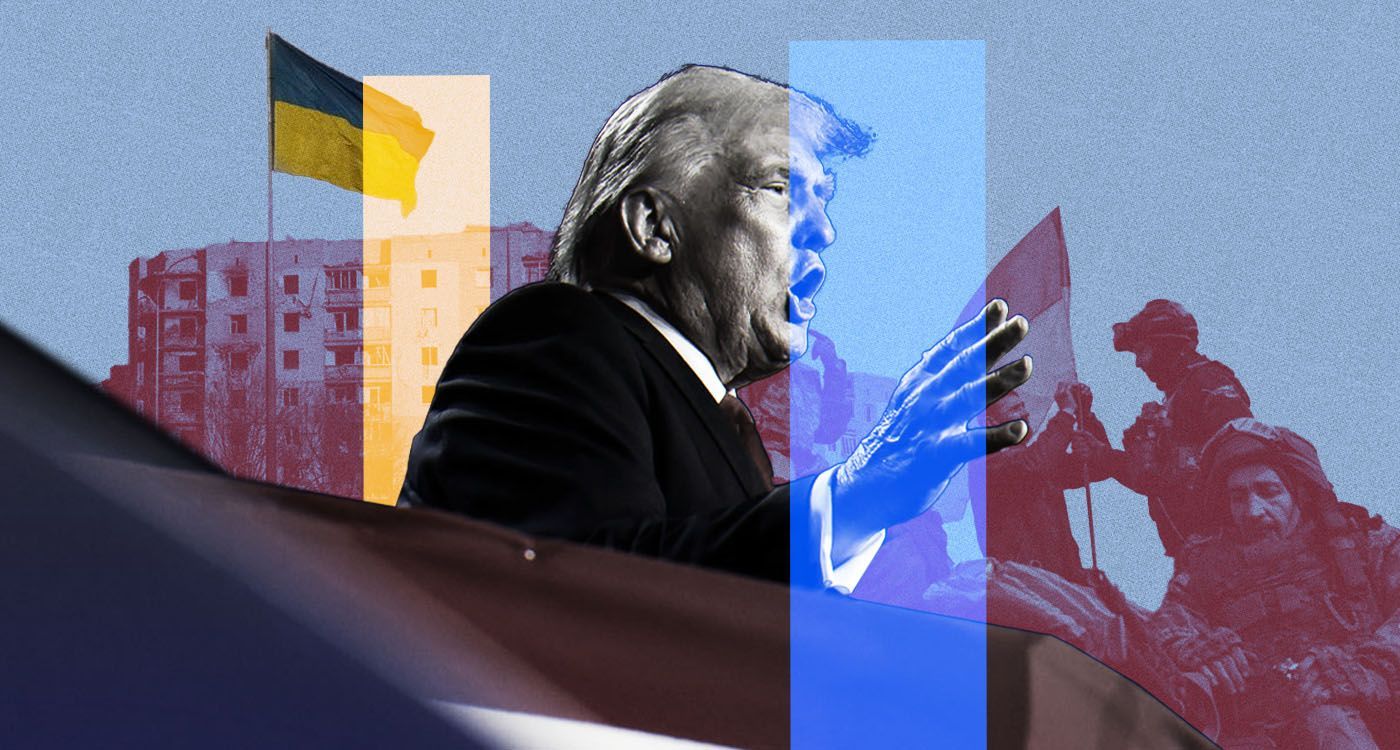- Home
- Middle East
- Trump’s Peace Plan for Ukraine Sparks Capitulation Fears

©This is Beirut
Newly elected United States President Donald Trump is pushing for a peace plan to resolve the Russo-Ukrainian conflict. He has repeatedly pledged that one of his first actions as president would be to end the war, claiming that had he won the 2020 election, the conflict would never have erupted, and asserting that he could bring it to a close within 24 hours.
While Trump has remained vague on the specifics of his plan, his advisors and allies have been more revealing.
In a recent interview, Vice President-Elect JD Vance detailed the proposal. The first step calls for a full ceasefire along the current 1,300 km front line. Vance explained that freezing the front lines would pave the way for a demilitarized zone, similar to the heavily fortified 4 km-wide zone separating North and South Korea. This would require Ukraine to surrender about one-fifth of its territory currently held by Russia, including Crimea (annexed in 2014), nearly 80% of Donetsk and Luhansk, and approximately 70% of Zaporizhzhia and Kherson.
The second key element of the plan is Ukraine’s neutrality. Trump believes that Ukraine should not join the North Atlantic Treaty Organization (NATO), to avoid escalating tensions that could draw the West into a third world war and to respect Russia’s sphere of influence. The plan would likely include enforcement mechanisms, such as deploying peacekeeping forces on the ground.
The challenge lies in bringing both Ukraine and Russia to the negotiating table, especially considering their current reluctance. Trump could potentially pressure Ukraine by leveraging military aid as a bargaining tool. However, convincing Russia to accept the plan is more complex. While Russia might be relatively satisfied with the proposal, it doesn't fully meet its maximalist war objectives. If Vladimir Putin rejects Trump’s peace plan, it will be interesting to see how he responds.
Many European and Ukrainian leaders fear that Trump could make further concessions to Putin, but it's important to note that, despite occasionally friendly rhetoric, Trump did not hesitate to take a firm stance with Putin during his first term. In fact, he even stated in a Fox News interview that he would increase military aid to Ukraine to force Russia into negotiations.
Now that Trump's peace plan has been outlined, it’s essential to understand why he is so determined to end this war. As a declared isolationist, reducing or suspending support to Ukraine aligns with the expectations of his electoral base: by December of last year, 48% of Republicans believed the US was providing excessive support to Ukraine – a number likely higher now. However, Trump appears motivated by a more profound geostrategic rationale. A report by the conservative think tank America First Policy Institute (AFPI), authored by two of his former national security chiefs, reveals his thinking. First, it points out the diminishing prospects of Ukrainian victory, given the stagnant front lines. Second, a prolonged conflict could strengthen the alliance between Russia, China, Iran and North Korea, with NATO reporting that over 10,000 North Korean troops have been deployed to Russia as part of a defense agreement. Finally, the US faces dwindling ammunition stocks and needs to conserve resources for a potential conflict with China. A recent study by the Rand Corporation, a non-profit global policy think tank, warns that US ammunition stocks could be depleted in just 28 days if a war over Taiwan were to occur.
However, a Ukrainian capitulation, as this plan seems to suggest, would have significant consequences for Europe and the US. It would increase the Russian threat to Europe, testing the strength of NATO’s Article 5, especially under Trump. It would also fuel organized crime and arms trafficking, while triggering a massive exodus of Ukrainians to Europe. Such an outcome would also disrupt global food security, exacerbating migration from the Middle East and Africa. Geopolitically, it would encourage nuclear proliferation and diminish Western influence, benefiting Russia and China.
Read more




Comments